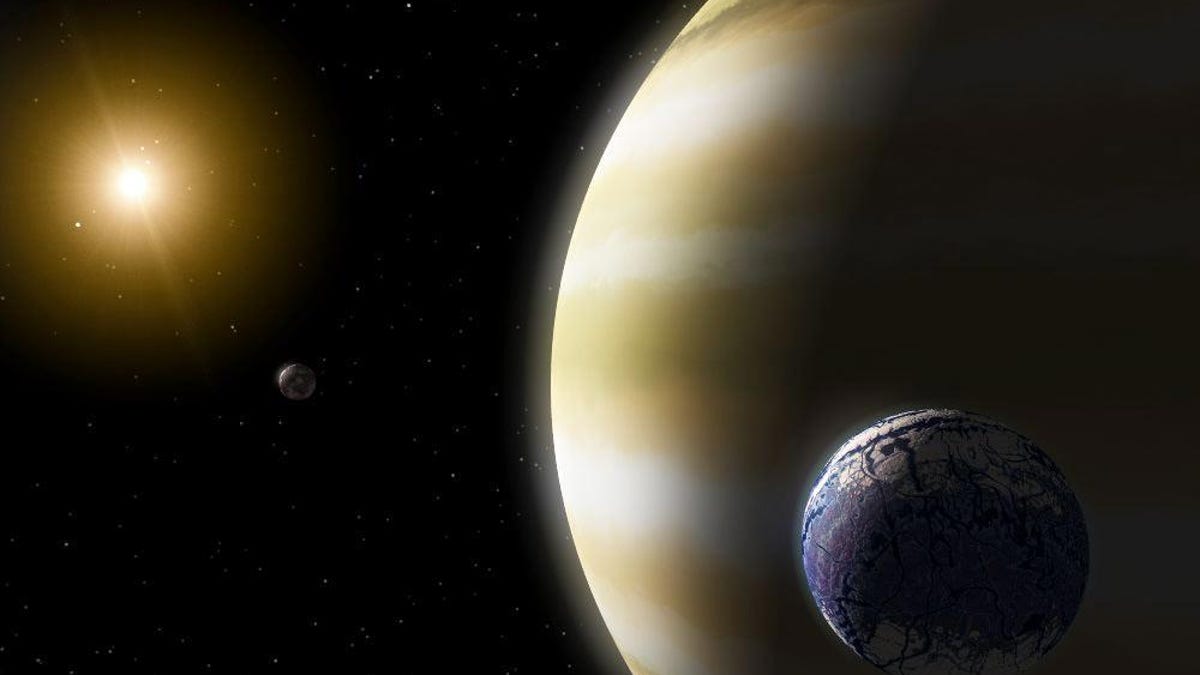Hubble hunts first exomoon, new frontiers in search for E.T.
NASA's space telescope is taking a closer look at a star system where astronomers think they may have spotted the first moon beyond our solar system.

Artist's rendition of an Earth-like "exomoon" orbiting a gas giant planet in a star's habitable zone.
Astronomers on Saturday pointed the Hubble Space Telescope in the direction of a star system 4,000 light-years away, where they hope to confirm the presence of an exomoon orbiting a distant exoplanet for the first time. Confirming the existence of such satellites beyond our own solar system opens a new door in the search for life elsewhere in the universe.
Columbia University's David Kipping and Alex Teachey led a team that cautiously announced the sighting of a candidate exomoon orbiting a planet in the Kepler 1625-b star system earlier this year. They secured time on Hubble to try to get a better look and perhaps confirm what would be the first discovery of an exomoon.
"Looking forward to getting data to either confirm or deny this candidate soon," Kipping said via email. He's cautious because he's seen previous potential exomoons evaporate when instrument glitches produced false positives.
It could take a few months before we have a better idea of what's circling Kepler 1625-b, but the speculation has already begun.
Earlier this month, astrophysicist Rene Heller analyzed the early data for the system and wrote a paper presenting a wide range of options for what potential exomoon Kepler-1625 b-i might be like. Possibilities include a gas world with the mass of Earth, a rocky planet 100 times as massive as ours or something more like Neptune.
Part of the reason for the excitement and early speculation about the existence and nature of far-off exomoons is that they have the potential to greatly broaden the horizons of the search for life beyond our own planet and solar system.
"If a Jupiter-like exoplanet orbits within a star's habitable zone, it begs the question: might that exoplanet host habitable moons, like the Ewok's home (Endor from the "Star Wars" universe is a small forested moon)?" Andrew Norton, professor of astrophysics education at the Open University, writes in The Conversation. "Jupiter has Europa, which is suspected to have liquid water buried under an ice crust, and Saturn has Enceladus, which definitely has water hidden underneath its coat of hydrocarbon ices. So Earth-like exomoons are certainly not out of the question."
Heller also co-authored another paper earlier this year looking at the circumstances that could result in habitable exomoons. In fact, he's been researching exomoon scenarios for years despite the fact that none has been confirmed just yet.
That could all change very soon if Kepler-1625 b-i turns out to be a reality and new, more powerful telescopes come online in coming years.
Thousands of exoplanets have already been confirmed, and the potential of exomoons orbiting both habitable and uninhabitable planets could expand the number of worlds to check for life exponentially.
Get your speeder bikes ready. Endor here we come.
Crowd Control: A crowdsourced science fiction novel written by CNET readers.
Solving for XX: The tech industry seeks to overcome outdated ideas about "women in tech."

